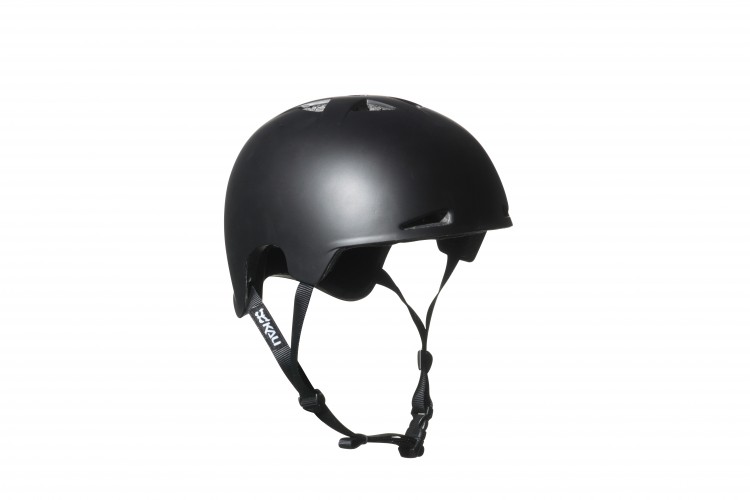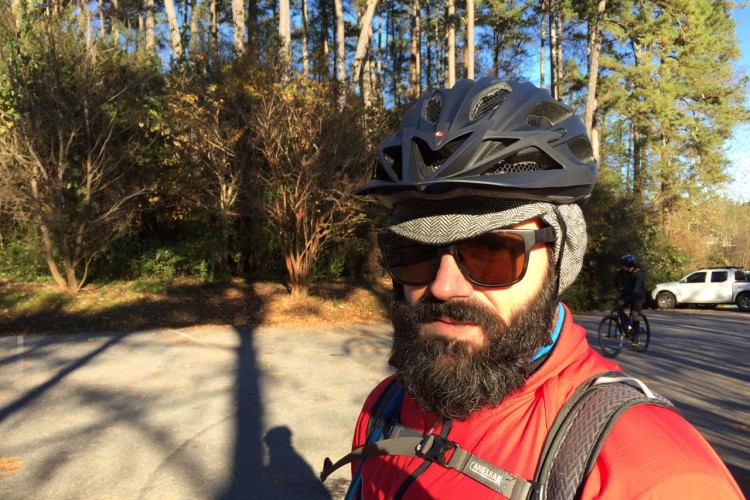
Mountain bike helmets are utilitarian items by design, and yet comfort and style play a big role in their selection. While there are many styles of mountain bike helmets available today, the vented helmet remains the most popular style for everyday riding.
Over the summer we tested four of the best vented mountain bike helmets on the market, and here’s how they stack up.
| Helmet | Price | Weight | Vents | Sizes |
|---|---|---|---|---|
| Bolle Trackdown | $139 | 368g | 15 | 3 |
| LEM Flow | $80 | 315g | 16 | 3 |
| Rudy Project Protera | $250 | 325g | 18 | 2 |
| Smith Session | $160 | 383g | 15 | 3 |
Bolle Trackdown Helmet

Bolle is fairly new to the mountain bike helmet market, bringing fresh ideas to the old skid lid.

Naturally, one of the first features the eyewear company designed into the Bolle Trackdown helmet is a “sunglasses garage.” Most of the helmets on this list boast an adjustable visor to accommodate goggle storage, but getting a pair of (expensive) sunglasses to stay put is a problem that Bolle seems to have solved in an elegant way.

Another interesting add-on Bolle includes with the Trackdown is a set of vent caps. These plastic inserts cover four of the top vents for added insulation in cool weather, or to keep rain off the wearer’s head. The caps weigh about 30g altogether, and snap in easily.

Over the past few months the Trackdown has become my go-to night riding helmet thanks to its shape and vent placement. I’ve found my velcro light mount is positioned well on the Trackdown, and it stays in place securely compared to the other helmets in this test.
With 15 vents, the Bolle Trackdown is tied with the Smith Session for the fewest number of vents, which means it’s also one of the heaviest and least ventilated. This makes it a good choice for riders in cooler climates, especially considering the included vent caps.
The retention system in the Bolle Trackdown, like all the other helmets in this test, features a ratcheting adjustment dial. Unlike the other helmets, Bolle’s retention band goes all the way around for a secure, comfortable fit.

Unfortunately the straps are not removable for cleaning or replacement, though the two separate pad pieces can be removed.

While I dig the color scheme on my test lid, the overall shape isn’t super flattering. On my head at least, the helmet looks particularly wide and tall.
⭐️ Find the Bolle Trackdown helmet at Amazon
LEM Flow Helmet

The LEM brand just launched in the US and Europe this year, though the company is said to have “more than 30 years of design and tech roots in Italy.” While the Flow helmet sample I received isn’t the flashiest in the bunch, it actually stacks up really well to the others in the group.

For starters, the LEM Flow is the lightest helmet I tested, weighing 315g (size medium). While that may be just 10g less than the next lightest helmet, the lightness is really noticeable upon picking the helmet up, and even more so when it’s on your head.

Part of the trick to making a lightweight helmet is maximizing the number of vents, and making each vent as large as possible. The LEM Flow offers decent ventilation, especially at the front where air intake is greatest. With 16 vents, it’s the second-most vented in this test.

Among the helmets tested, the LEM Flow features some of the best rear coverage. The indexed, 3-position visor is a nice touch as well. A one-piece, removable pad features a partial bug net to keep nasties out of your hair.

Aside from the boring graphics on my sample (LEM actually has 10 colors to choose from, including some with more detailed graphics), the only other place this helmet seems to skimp is on the straps. While the straps are very soft and comfortable, they aren’t removable and they seem to be awkwardly placed.
Rudy Project Protera

The Rudy Project Protera helmet is the most vented and also the most expensive. It’s not quite the lightest of the bunch, but almost.

Rudy Project has come up with a retention strap system that can easily be removed for cleaning, or replaced altogether for an updated or custom look. Each anchor point is labeled with a number, making re-installation pretty much dummy-proof.

I really dig the single-piece padding with integrated bug netting. Some helmets feature multiple removable pads that can be difficult to get into the right position. Since the Protera pads are all sewn together in one piece, they’re always in the right spot relative to one another. Velcro attaches the piece inside the helmet.

Even the hardware on the visor pivot is high quality with a nice feel to it. The chin strap features a nice buckle and strap management clips for a clean look and flap-less performance.

The plastic, ratcheting retention system stops at the temples like all the other helmets in the test, save for the Bolle helmet.
After just a couple rides I ran into a problem with the retention system when a tiny piece of plastic sheared off. I have no idea how this happened; it could’ve been while I was wearing the helmet, or when I took it off. Regardless, missing this tiny but crucial bit of plastic threw off the whole fit system so much that I was forced to send the helmet back for repair.

I found the Rudy Project warranty service experience to be just fine, though a little confusing and a bit of a hassle. In the end, the helmet was fixed at no charge.
Rudy Project offers the Protera helmet in 9 colorways.
Smith Session

Of all the helmets I tested, the Smith Session is my favorite in terms of style. The matte black finish isn’t flashy, while the Koroyd provides a nice bolt of color. The shape of the helmet is perhaps the most flattering of the bunch, though your mileage may vary depending on your head shape and size.

Like the other high-end helmet in this test, the Smith Session features removable straps for easy cleaning or replacement. Smith’s unique Koroyd structure doesn’t feature nearly as prominently in the Session as it does in the Smith Forefront, though the company notes Koroyd is used where it matters most here in terms of structural strength.

While Koroyd is said to add strength and rigidity to the helmet, it also adds weight to an area that would otherwise be open air. The upshot is, the Session is the heaviest helmet we tested. Not only that, the Koroyd sections don’t ventilate as well as, well again, open air.

The good news is Smith manages to carve out the largest front vents of any of the helmets tested, with a massive maw right down the middle, flanked by two more substantial vertical vents.

The Session includes a MIPS liner, which is a nice addition at this price point, and while it’s not heavy, it does add to the overall weight. Most riders will agree added rotational protection is worth the extra heft.

I tried using the Session for night riding, but my velcro light mount just didn’t jibe well with the helmet shape and vent placement. Smith says the helmet is designed with helmet camera and light mounts in mind, though I suggest using a sticky mount rather than one that relies on a velcro strap.

Finally, I found the finish on the Smith Session to be a little… flaky. After a few months of riding, the matte finish is peeling off, revealing a shiny layer beneath. It’s most noticeable around the edges, but I can also see shiny spots starting to emerge on top of the helmet where tree branches have scratched the matte away.
Smith offers the Session in five additional colorways, though the matte black is still my favorite, despite the wear.
Check out our mountain bike helmet buyers guide and our picks for the best mountain bike helmets.





















4 Comments
Oct 23, 2018
Oct 23, 2018
Which helmets would you have included? We tried to include new(ish) lids for 2018.
Oct 26, 2018
I just got a Bontrager Rally in "Hunting Season Safe" orange. Love it. Light-ish, good coverage, and great venting.
Jeff, you would love the slick magnetic light mount for your night riding. Very secure, and very easily removed.
Oct 23, 2018
I would be interested in your opinion because I really love my A2 but I've been looking at the Smith helmets as well.